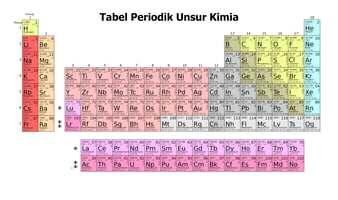Protactinium (Pa) 1. Basic Information Property Value Atomic Number 91 Symbol Pa Atomic Mass...
Terbium
Terbium (Tb)
1. Basic Information
| Atomic Number | 65 |
| Symbol | Tb |
| Atomic Weight | 158.92534 g/mol |
| Category | Rare earth metals, lanthanides |
| Electron Configuration | [Xe]4f9 6s2 |
2. Physical and Chemical Properties
Terbium is a soft, malleable, silvery-gray metal. It is quite stable in air but oxidizes slowly. Terbium reacts with cold water and is soluble in mineral acids. Its melting point is 1360°C and its boiling point is 3041°C. In solution, terbium usually has an oxidation state of +3, although a +4 state is also possible in some compounds.
3. Presence in Water and Health Effects
Terbium is rarely found in natural water due to its rarity in the Earth's crust. If present, it is usually in very low concentrations. The health effects of terbium have not been studied in depth, but it is considered to have low toxicity if ingested. Exposure to terbium powders or compounds may cause irritation to the skin and eyes. There is no known biological role for terbium in the human body.
4. Water Treatment Applications and Removal Methods
Although terbium is rarely a major contaminant in water, the following removal methods can be used if needed:
- Ion exchange: Cation exchange resins can be used to remove Tb3+ ions from water.
- Chemical precipitation: Terbium can be precipitated as hydroxide at high pH.
- Adsorption: Activated carbon or special adsorbents can remove terbium from water.
- Membrane filtration: Technologies such as nanofiltration or reverse osmosis can be effective for removing terbium ions.
5. Industrial Uses in Water Treatment
Terbium has no significant direct use in water treatment. However, some terbium compounds can be used in specialized applications such as sensors or catalysts in certain water treatment processes.
6. Case Studies or Real-World Application Examples
There are no specific case studies on terbium removal in large-scale water treatment due to its rarity as a contaminant. However, laboratory research has shown the effectiveness of ion exchange resins in separating terbium from solutions containing other lanthanides.
7. Regulatory Guidelines and Standards
There are no specific guidelines for terbium in drinking water set by WHO or other major regulatory bodies. This is partly due to its rarity and low toxicity. However, some countries may have standards for total rare earth metal concentrations in water.
8. Environmental Impact and Sustainability Considerations
Terbium is not considered to pose a significant environmental threat. However, mining and processing of rare earth metals, including terbium, can have environmental impacts. More efficient recycling and extraction efforts are being developed to reduce environmental impacts and improve sustainability.
9. Future Trends and Research in Water Treatment
Current research includes:
- Development of new adsorbents that are more selective for rare earth metals, including terbium.
- More efficient extraction and recovery techniques to separate terbium from other lanthanides in wastewater.
- Use of terbium nanoparticles in sensor technology for water contaminant detection.
- Studies on the potential of terbium in photocatalysis for water treatment.
10. Interesting Facts Related to Water Treatment
- Terbium has unique luminescent properties, which could potentially be used in optical sensors for water contaminant detection.
- Although rare in natural water, terbium can be found in higher concentrations in wastewater from the electronics or permanent magnet industries.
- Terbium and other lanthanides have different selectivity to ion exchange resins, which allows their separation in water purification processes.
- Some studies show the potential of terbium compounds as catalysts in advanced oxidation processes for wastewater treatment.
.png)
.png?width=50&name=Logo_Watermart_Perkasa-removebg-preview%20(1).png)
